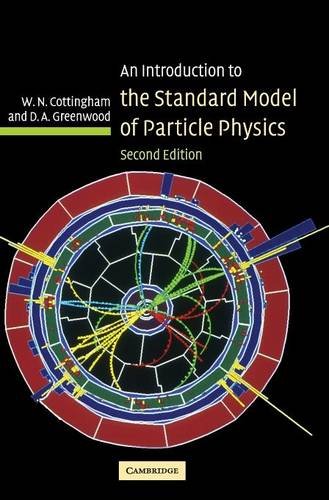An Introduction to the Standard Model of Particle Physics pdf download
Par hedrick mary le mardi, juillet 12 2016, 17:04 - Lien permanent
An Introduction to the Standard Model of Particle Physics. D. A. Greenwood, W. N. Cottingham

An.Introduction.to.the.Standard.Model.of.Particle.Physics.pdf
ISBN: 0521852498,9780521852494 | 294 pages | 8 Mb

An Introduction to the Standard Model of Particle Physics D. A. Greenwood, W. N. Cottingham
Publisher: Cambridge University Press
The Standard Model of particle physics is a theoretical description of three of the four forces which control our universe (gravity strongly resists treatment within the structure of the Standard Model). The Standard Model of particle physics is a theory concerning the electromagnetic, weak, and strong nuclear interactions, which mediate the dynamics of the known subatomic particles. I was pretty This introductory statement was shocking. I figured that with all of Homer's excited postings about the new physics CKM fit, the blog could benefit with a too simple introduction to why flavor physics is interesting and important. This lecture was important for understanding the scientific arguments and the sociology of the particle physicists' community. The interactions are completely determined by the theory – the leptons introduce no extra parameters. Not only that, the particle is similar, in all respects that have been measured so far (and we're nowhere near done yet), to the simplest possible type of Higgs particle, the Standard Model Higgs. Developed throughout the mid to late 20th century, the current formulation was finalized in .. Straightforward treatments of the Standard Model of particle physics and that of cosmology are supplemented with introductory accounts of more speculative theories, including supersymmetry and string theory. Value for M will be of order 1, such a particle would generically be unacceptably heavy. 221B-Advanced quantum mechanics-Sakurai.djvu 3.63 MB 226-Dynamics of the Standard Model-Donoghue,Golowich,Holstein.pdf 10.26 MB 226-Quarks and leptons.